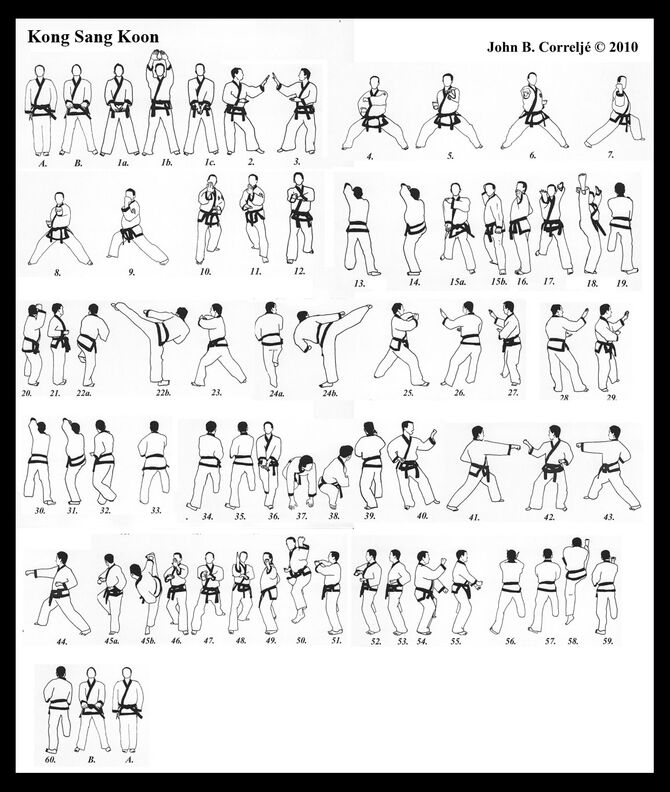This form is a traditional taekwondo form, meaning it pre-dates contemporary forms (such as those used by the ITF, ATA, and WT). In other words, this is a form used during the 1950s within the Nine Kwans that eventually came together to form taekwondo.
- Older forms such as this one were often based on forms from other martial arts.
- The details and names of these older forms tend to vary more widely from school to school as well.
The version shown here is just one version; the reader should recognize that there will be variations among schools.
Kong Sang Koon (also called Kūshankū (クーシャンク, 公相君), Kūsankū (クーサンクー), or Kankū-dai (観空大)) is an open hand karate kata that is studied by many practitioners of Okinawan Karate. In many karate styles, there are two versions of the kata: Kūsankū-shō and Kūsankū-dai.
The name Kūsankū or Kōsōkun (公相君) is used in Okinawan systems of karate, and refers to a person by the name of Kūsankū, a Chinese diplomat from Fukien who is believed to have traveled to Okinawa to teach his system of fighting. In Japanese systems of karate, the kata has been known as Kankū (translated as gazing heavenward, viewing the sky, or contemplating the sky) ever since it was renamed in the 1930s by Funakoshi Gichin. This kata is also practiced in Tang Soo Do and Traditional Taekwondo.
Due to its difficulty, this kata is often reserved for advanced students. One of its distinguishing features is the jump, which incorporates two kicks. The symbol for this kata is said to be an eagle.
Video
Diagram
This diagram is copyright John B. Correljé and is used with permission. Terms and conditions are available at http://sites.google.com/site/tangsoodochonkyong 
Written Instructions
See: http://www.trinityshotokan.com/documents/kanku_dai.html and http://www.trinityshotokan.com/documents/kanku_sho.html
